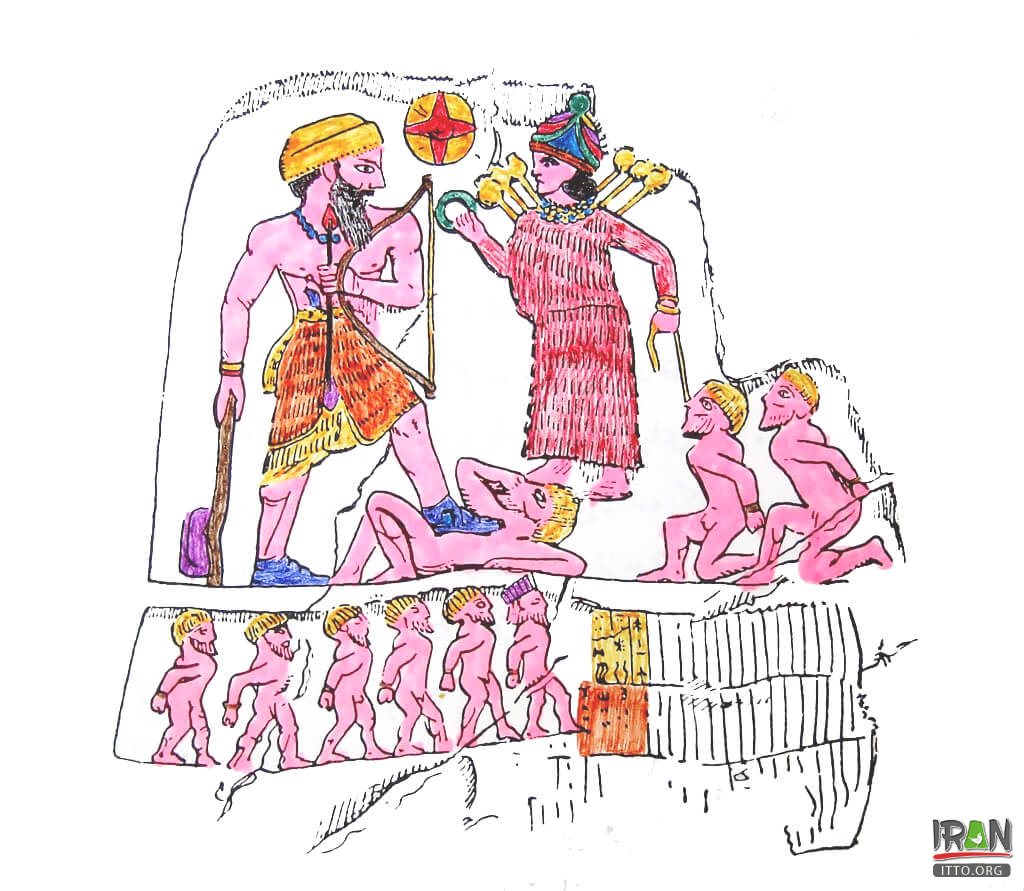In the vicinity of Sar Pol-e-Zahab, there is an Anubanini impression engraved in the breast of a rock. Anubanini rock relief is alongside an inscription written in Akadi script and this relic is present even up to this date. The two embossments of this rock are related to 2800 years BC., engraved in the breast of the a mountain reaching an elevation of 35 m. high., and it is attributed to Semitic monarch known as "Anubanini".
The left foot of this impression has been put on a captive. Under this engraving the faces of 16 other captives under tragic conditions have been displayed. An inscription revealing the victory of Anubanini can also be observed below the said effect.
The rock relief is believed to belong to the Lullubi culture and is located 120 kilometers away from the north of Kermanshah, close to Sarpol-e Zahab. Lullubi reliefs are the earliest rock reliefs of Iran, later ones being the Elamite reliefs of Eshkaft-e Salman and Kul-e Farah.

Modern drawing of the relief
In this rock relief, Anubanini, the king of the Lullubi, puts his foot on the chest of a captive. There are eight other captives, two of them kneeling behind the Lullubian equivalent of the Akkadian goddess Ishtar (recognisable by the four pairs of horns on her headdress and the weapons over her shoulders) and six of them standing in a lower row at the bottom of the rock relief. He is bare-chested, only wearing a short skirt.
The general style of the Anubanini relief emulates the style of Mesopotamian royal art of the period, as well as its language, in using the Akkadian language and script for this inscription.
There's also an inscription in the Akkadian language and Akkadian script. In the inscription, he declares himself as the mighty king of Lullubium, who had set up his image as well as that of Ishtar on mount Batir, and calls on various deities to preserve his monument.
The inscription begins with the formula:
Anubanini, the mighty king, king of Lullubum, erected a image of himself and an image of Goddess Ninni on the mount of Batir... (follows a lengthy curse formula invoking deities Anu, Antum, Enlil, Ninlil, Adad, Ishtar, Sin and Shamash towards anyone who would damage the monument)
The date of the rock relief is believed to be circa 2300 BC. It was damaged about 30% during the Iran-Iraq war. Older photographs show in particular a nearly undamaged figure of the king.


